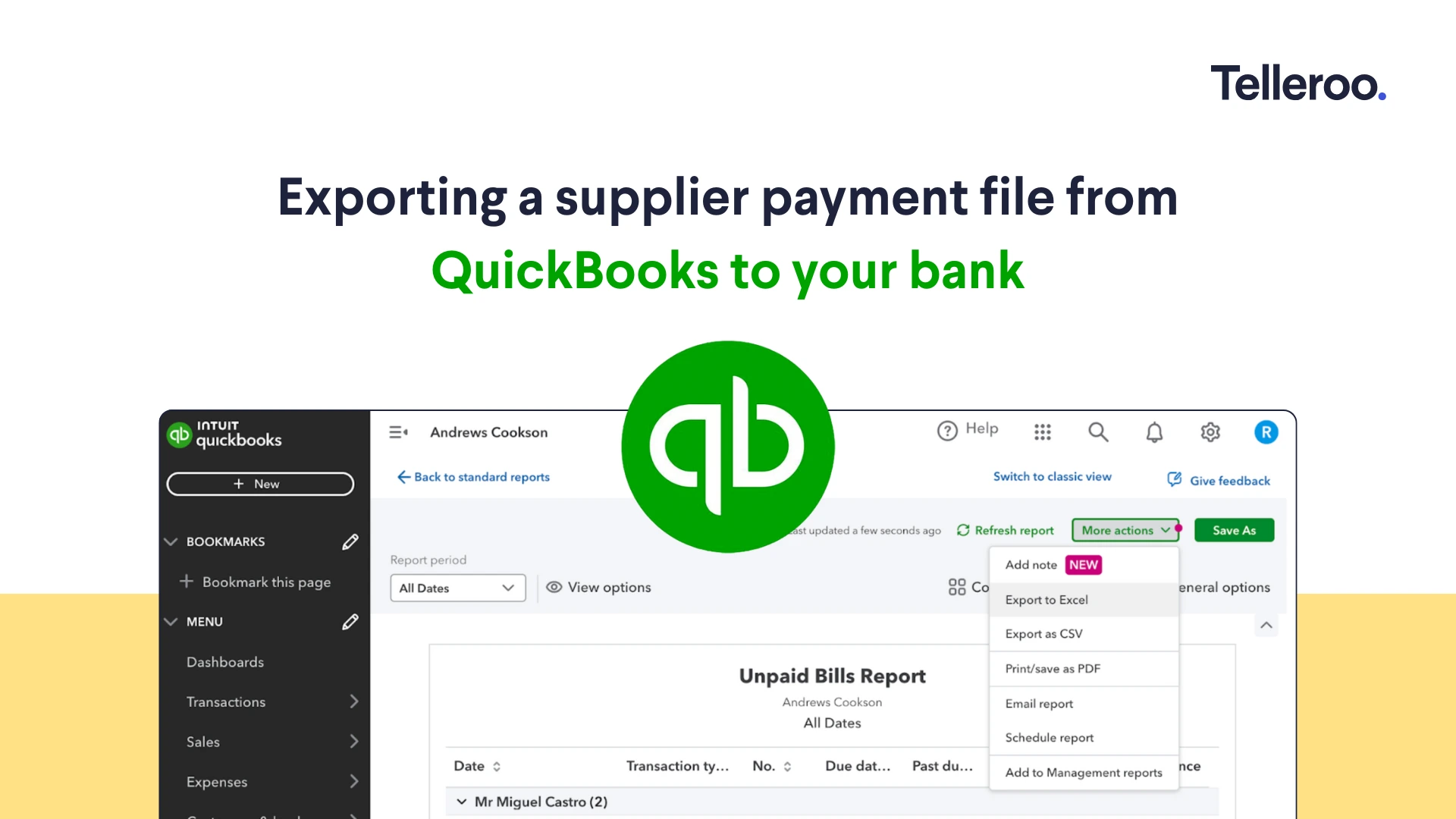
Importing payment files into your bank prevents errors like overpayments, duplicates, or sending payments to the wrong supplier. There are a few additional steps you’ll need to take in QuickBooks to get supplier bank details into the correct format so you can upload them to your business banking. This guide shows UK businesses how to save bank details in QuickBooks and export them with unpaid bills, ready to use in your bank’s payment file template.
We’ll cover:
Adding suppliers in QuickBooks helps you track expenses, manage payments, and stay organised. It ensures accurate record-keeping, making it easier to monitor who you owe and streamline your accounting processes.
Head to Expenses > Suppliers.

To add a new supplier, click New Supplier.

You will see that there is nowhere for you to manually add bank details to these suppliers. QuickBooks does not have an official location for bank details.
As a workaround, you can add bank details to the Phone number field.
Type the sort code and then the account number. Do not enter a space between the sort code and account number
As an example:

Make sure you repeat this process for all payees you’d like to include in the batch payment file.
Go to Reports > Standard Reports.

Scroll down to the What you owe section and find the Unpaid Bills report. Alternatively, you can do a quick search for this report.

Under Columns, add all necessary information you’ll need for your bank’s payment file. Make sure to select Phone as that’s where you’ve stored the bank details.

Within the More actions dropdown, you will find options to Export to Excel or Export as CSV. Choose the right format for your business banking provider.

The QuickBooks file you have exported will not work as a direct upload into your bank. You need to download your bank’s custom payment file template. Here are links to some of the top UK banks’ templates and/or guidance:
Then, copy and paste the values from your QuickBooks file into your bank’s template. Make sure to adjust any formatting your bank requires. You will need to separate the sort code and account number.
Finally, upload your payment file to your bank. Telleroo has how-to guides on making bulk payments via business banking on the blog, including Metro Bank and Starling.
You may have to make further changes or adjust your process depending on the limitations of bulk payments in your online banking.
Coming soon, with the Telleroo and QuickBooks integration (join the waitlist here) you’ll be able to:

Simply select the invoices you’d like to include in your pay run. We’ll pull all the information straight from QuickBooks.
Stop giving bank account access to your team, and/or your accountant. Simply top up your Telleroo account to fund the payments you’re sending.
We check your payee details are a match to the bank account, flag suspicious payee changes and more.
Schedule payments to send anytime - 24/7, 365 days a year. Collaborate with your team, easily create and approve payments. No cut-off times, no daily caps.
👉 Check out the upcoming integration 👈
You can sign up for Telleroo in just a few clicks. Make bulk payments without the pain.